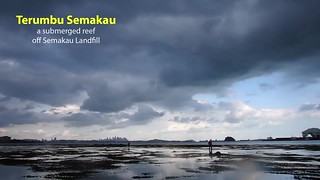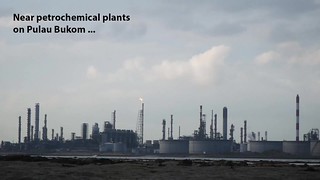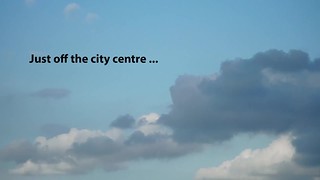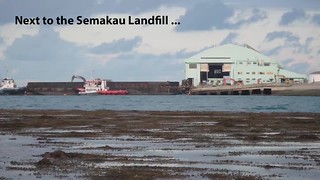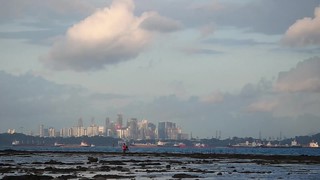I was relieved to see no signs of coral bleaching, but sad that the seagrasses have not returned to the Terumbu.
Terumbu Semakau lies next to the Semakau Landfill and close to the petrochemical plants on Pulau Bukom. Yet, it remains one of the nicest Terumbus.
And yet, it is full of amazing marine life!
The Sargassum seaweeds are in full bloom. Making it hard to check out the reef edges.
I also try to check for coral bleaching here. There are some corals even away from the reef edge. I saw Anemone corals and one Torch anchor coral colony, none of them were bleaching. This seems to be an improvement from what I saw in Jun 2015.
There was a wide range of the usual commonly seen corals, previously in Family Faviidae, now in Family Merulinidae. None of those I saw were bleaching.
Also many small colonies of Cauliflower corals, Branching montipora corals, as well as Acropora corals. None of them were bleaching.
The nice clump of Stumpy acropora corals that we saw in Jun 2015 are still there and very much alive. Here's a view of them with the petrochemical plants of Pulau Bukom on the horizon.
And a view with the cityskyline.
The big patch of Branched montipora corals is ringed by live corals but those in the centre still appear to be dead. They were last seen alive on our trip in Jul 2014 and were already dead on our trip in Jun 2015.
There were also some Pore corals, and a few small colonies of Galaxy corals and Anemone corals. None of them were bleaching.
At Marina Keppel Bay, most of the hard corals growing on the pontoon were alright, although some had signs of bleaching on the edges.
I came across several medium sized leathery soft corals. None of them were bleaching.
But most of the Asparagus flowery soft corals I saw were rather pale or oddly coloured, although none were bleaching outright. This seems a little improved from what I saw on our last trip in Jun 2015.
Here's a video of some soft corals and fanworms too!
The gorgeous Magnificent sea anemone is also seen near the reef edge.
When you see one Magnificent anemone, expect to see lots more nearby. This is because these sea anemones can reproduce by cloning.
There are also Giant carpet anemones. Alas, none of these large anemones were home to anemonefishes which are usually commonly found in them. Have they been harvested?
There were several Common cerianthids and this less common-looking one which might be a Small-mouth cerianthid.
Chay Hoon spotted this strange sea anemone. It was about 5cm across and embedded in rock among the sand. We've not seen anything like this before.
The rest of the team saw other awesome marine life: nudibranchs, flatworms, colourful hermit crabs and snails and lots more. Check out links to their posts below.
The seagrasses that used to be so lush here are still not back. Where they used to be, just vast expanses of bare sand.
A closer look reveals sprinkles of Spoon seagrass with tiny leaf blades. And very short cropped Tape seagrasses barely sticking out of the surface.
Although I did come across a few longer Tape seagrasses closer to the reef edge, most of those in the middle of the Terumbu were cropped short. There were also some sparse patches of what looked like Serrated ribbon seagrass.
Here's what the seagrass meadows looked like when we visited inJune 2010. It breaks my heart to think the seagrasses will never recover.
Alas, I came across a deep bare gouge near the reef edge. A sign of a big boat strike. At the edge of the reef, the line of large fish traps we saw on our last trip in Jun 2015 was still there. From a distance, it looked like they are no longer in use.
Fortunately, the rain clouds went past us.
Let's hope our reefs continue to dodge the coral bleaching bullet!
Photos by others on this trip
- Jianlin Liu on facebook.
- Juria Toramae on facebook.
- Russel Low on facebook.
- Loh Kok Sheng on facebook and on his blog.
- Marcus Ng and Nicole Wong on facebook.
- Chay Hoon on facebook.





